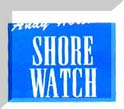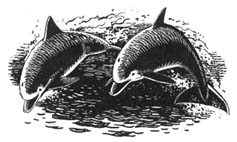|
Marine Life Study Society |
| Homepage (Address) |
| Index |
| News |
| Main Links |
|
|
|
|
|
FORUM PAGE |
|
CONTENTS Books
(New)
|
|
DIARY |
|
|
|
|
|
|
|
Vernal/Summer 1998 Glaucus |
|
Norwegian Marine *** Channel Islands *** South Australia *** |
|
(Underwater Windows) |
|
|
|
|
|
|
|
|
|
AGE GROUP 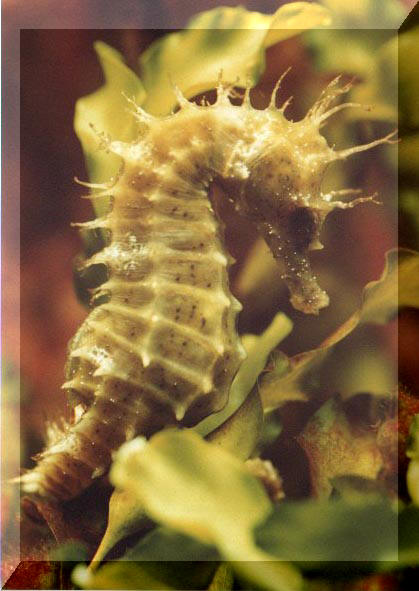
7-14 years |
|
|
|
|
|
|
| Shorewatch
Newsletter
Volume 4 |
|
Andy Horton spends a year examining the biology and behaviour of the rock pool fish and other marine life. |
|
|
TORPEDO
41
November
1999
Electronic News Service ISSN 1464-8156
Permission is granted to forward the Bulletin on unaltered. However, you will have to include the images separately. To save download times, only new images are included with each Bulletin.
The Bulletin is designed to be viewed on Internet Explorer or Netscape
using medium fonts at a resolution of 800 x 600.
Only when the last tree has died and the last river been poisoned and
the last fish been caught will we realise we cannot eat money
Cree Indian saying
(from the Australasian Nudibranch Newsletter Web Site)
http://www.ozemail.com.au/~glaskin/links.htm
Renewals:
Thank you for renewing your subscription as a member for 1999. No further Renewal Forms or Shorewatch Newsletters will be sent out to 1998 members.
However a form is available from the web site at:
Renewals 1999
New Members
Subscribers to Torpedo who wish to receive the written material on paper in the journal Glaucus and the Shorewatch Newsletter as a New Member can find the Application Form at:
New Members 1999
DIARY
In chronological order, the most recent events are at the top of the page. Events
open to the public, free or for a nominal charge only are included. Most Seminars need to be booked in advance
1999
Saturday 30th and Sunday 31st October 1999
Marine
Conservation Society
Annual Conference
Venue: Crawford House, Manchester University
Saturday 09:00 to 17:30
Full programme of speakers for Saturday & Sunday.
Contact: MCS Tel: 01989 566017 Fax: 567815 EMail: mcsuk@mcmail.com
For more information, contact:
Richard Harrington, Communications Officer on 01989-566017
or Sam Pollard, Director of Conservation on the same number
Marine
Conservation Society, 9 Gloucester Road, Ross-on-Wye, Herefordshire
HR9 5BU
Tel: 01989-566017 Fax: 01989-567815
www.mcsuk.mcmail.com www.goodbeachguide.co.uk
Devon Wildlife Trust
Wembury
Bay Rockpool Rambles
Contact
Wembury Marine Centre Tel: 01752 862538
Leaflet from Devon Wildlife Trust Tel: 01392 279244.
VISITORS CENTRE
Coastal
Visitors Centre
Salisbury
Gardens
Dudley
Road
Ventnor
Isle
of Wight
PO38
1EJ
Tel:
01983 855400
EMail:
coastcent@iwight.gov.uk
The Centre covers many aspects of the coastal zone, which include coastal flora and fauna, marine and inter-tidal archaeology, coastal defence and particularly coastal instability issues.
CETACEAN WATCHING
The Whale Watch capital in Iceland is based at Husavik. Sights include Blue Whales, Humpbacks, Orca, Minkes and Sei Whales, dolphins, porpoises, plus Northern Bottle-nosed Whales.
The page for whale and dolphin spotting around Britain has not been prepared yet. If you are interested in marine wildlife, including marine mammals, and are planning a holiday in the UK, especially Scotland, it is work clicking on the image "SeaProbe" and having a look at the page:
Also
New
Quay Dolphin Monitoring Group, Cardigan Bay, Wales
http://www.ceinewydd.co.uk/
Dolphins,
Porpoises and Whales of the Moray Firth
http://www.highlanderweb.co.uk/dolphins.htm
Cornwall:
Dolphins are reported from the south coast of Cornwall regularly during
the summer. The Lizard peninsula is a good vantage point.
Shetland Isles:
Sumburgh Head, the southernmost trip is a regular spot for spotting
whales and dolphins as is the ferry to the islands.
For more cetacean reports click on the Shetland logo below:
Minimising disturbance to cetaceans from recreation at sea
http://www.wildlife-countryside.detr.gov.uk/whales/rec.htm
Minimising disturbance to Cetaceans from Whale watching operations
http://www.wildlife-countryside.detr.gov.uk/whales/whale.htm
Reports of marine wildlife from all around the British Isles, with pollution incidents and conservation initiatives as they affect the flora and fauna of the NE Atlantic Ocean.
26 October 1999
The Public Enquiry about the new Portobello Sewage Works planned for the chalk platform at Telscombe Cliffs, east of Brighton, Sussex begins. East Sussex CC are opposing the plans put forward by Scottish Power (formerly Southern Water) that threatens to damage the SSSI chalk cliffs exposed to the sea.
The Sewage works are required to comply with the EU Directive on secondary treatment of sewage for large towns like Brighton.
More News on the Plans16 October 1999
John Shuker from Sark caught a Knobbed Triton, Charonia lampas (L.), in a gill net, to the west of Sark, north of Les Hautes Boues and south of Brehou Island, Channel Islands.
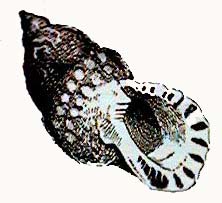
Knobbed Triton
Illustration by Chris HicksIt measured 222 mm total length. Weight drained 1128 grams. The specimen is alive. I took the Triton to the Guernsey Aquarium on 18 October 1999.
This large gastropod has only been recorded in British seas on a few occasions. It is a southerly species known from the Mediterranean Sea.
More InformationReport by Richard Lord (Guernsey)10 October 1999
EMail:fishinfo@guernsey.net
Nigel Hunter (Littleborough, Lancashire) discovered a Leatherback Turtle, Dermochelys coriacea, decomposing on Newborough island beach on the Isle of Anglesey. The turtle was nearly 2 metres long and nearly a metre (90 cm) wide.
BMLSS Turtle Page10 October 1999
Five Risso's Dolphins, Grampus griseus, were seen between Porthellick and Peninnis, off the east coast of St. Mary's, Isles of Scilly, in the morning. These dolphins are being more commonly reported off Cornwall in the last two years.
Previous Report
Report from Vince Smith's One-List/Cornish Wildlife
Send a message to the list at: CornishWildlife@onelist.com9 October 1999
A small Long-finned Pilot Whale, Globicephala melas, (Family: Delphinidae) was spotted by angler John Luff-Smith in the Thames estuary, near Southend, swimming towards London. Although probably not regarded as a special mention from around most of the British coast, they are rarely seen in the south-east, although they are known from the seas off Sussex.Report from the Whale & Conservation SocietyCetacean Page5 October 1999
Several Common (Couch's) Sea Bream, Pagrus pagrus (=Sparus), have been caught in the last few weeks. There seems to be a small school, probably on Guernsey's east coast, because the same fisherman catches them. One Couch's Sea Bream caught on September 7 weighed 1.95 kg (4 lb 4¾ oz) I found one at the fish market (landed on October 5) that weighed 1.72 kg (3 lb 12¾ oz) (total length 45 cm, fork length 39 cm).
This Mediterranean and tropical Atlantic fish is rare in the English Channel and common, but not an abundant fish of sand bottoms and eelgrass beds. It rarely exceeds 50 cm in length and 2.5 kg in weight.Report by Richard Lord (Guernsey)5 October 1999
EMail:fishinfo@guernsey.net
Tens of thousands By-the-Wind Sailor, Velella velella, were discovered by Paul Gainey, washed up on the between Gwithian and Mexico Beach beaches on the north coast of Cornwall (see the entry below). They were also reported at Sennen Cove (near Land's End) by Jayne Herbert.Jellyfish Page (Velella)
Reports on the Seaquest SW (Cornwall Wildlife Trust web pages).3 October 1999
ThreeOcean Sunfish, Mola mola, were spotted near St. Ives, Cornwall.from Brian StoneFull Report Reports of the Sunfish from off Cornish shores are frequent during the summer months. In British seas they vary in size from 40 cm to nearly two metres in length, but they can grow considerably larger. Some of the observations are listed on the Seaquest SW (Cornwall Wildlife Trust web pages).
Sunfish Page2 October 1999
A Portuguese Man o'War, Physalia physalis, was washed up on Porthcothan Beach (just south of Padstow) (SW8572), Cornwall. This colonial hydrozoan (jellyfish-like invertebrate animal) has a float bladder that was fully inflated and 22 cm in length. There were quite a thick bunch of stinging tentacles still attached, to a length of about 15 cm. It was washed in with the incoming tide after a period of south-westerly strong winds.
As expected, several more Portuguese Men o'War were discovered, five on Porthcothan, two on Watergate Bay and Paul Gainey found five on Gwithian (Hayle) beaches, over the weekend. Most specimens were alive and some have been placed in an aquarium for further study.
By Sunday night the tally had increased to 22 from Hayle up to Trevose Head. The tentacles on the biggest were well over a metre long, possibly twice that length (had they been given the chance to extend fully).
Jellyfish Page (Portuguese Man o'War)Report by Nick Darke (Cornwall)Portuguese Men o'War reported over a large area of the coast of Cornwall and the Isles of Scilly . Over 100 specimens and there were probably many more stranded in inaccessible coves.Stella Turk (Cornish WWT)Portuguese Men o'War: Further Information on the Cornwall Wildlife Trust site.
On 8 October 1999, a couple of Portuguese Men o'War were discovered washed up on the west coast of Guernsey, Channel Islands, and this may just the first of a large swarm.Report by Richard Lord (Guernsey)26 September 1999
A juvenile Common Dolphin, Delphinus delphis, was seen by Stephen Westcott playing around the boats in the Helford River, Cornwall, in the late afternoon.
More information and Reports on the Seaquest SW (Cornwall Wildlife Trust web pages).22 September 1999
A large Tope, Galeorhinus galeus, weighing between 38 and 40 kg (85 to 90 lb), was tagged and released off the Isles of Mull, Scotland.
The current rod and line record of , is 37.4 kg (82 lb 8 oz) for a Tope caught off Bradwell-on-Sea, Essex, (southern North Sea) in 1991.
More Information on Tope(Len Nevell, Sea Angling Report)18 September 1999
A pod of Bottle-nosed Dolphins, Tursiops truncatus, numbering up to 20 individuals were reported by Hazel Meredith in Fistral Bay, (near St. Ives), Cornwall, (SW7961) in an area occupied by bathers.Later in the month pods were reported off Perranporth and Crantock, Cornwall.
Small pods of 5 and 7 Bottle-nosed Dolphins were seen in Mount's Bay and Gwithian, Cornwall, on 15 & 17 October 1999.
More information and Reports on the Seaquest SW (Cornwall Wildlife Trust web pages).
Cetacean Page.16 September 1999
A Slipper Lobster, Scyllarus arctus, was trawled up off Wolf Rock, off the Cornish coast, and this was only the second record off the Cornish coast this century. This large crustacean (it looks a bit like a compressed Lobster, and when discovered it is sometimes called a Mantis Shrimp for lack of a proper name) has two shrimp (Crangon)-like pincers and a carapace probably as wide as a Lobsters, but it is still less than half the length (excluding the long claws of a Lobster). BMLSS records have two specimens discovered off Dorset, one trawled and one seen by a diver, several years ago before the web site records were compiled, from 1996. The Slipper Lobster is a southern species found in the Mediterranean Sea. It is classified in the Infraorder Palinura: see taxonomy notes.
Discovery Report by Doug Herdson. National Marine Aquarium at Plymouth).
Notes by Andy Horton.
Crustacea Page3 September
The Scottish Executive confirmed that the South East Islay Skerries on the Scottish island of Islay are to be re-considered as a proposed Special Area of Conservation (SAC) for Harbour Seals, Phoca vitulina vitulina, under the European Community's Habitats Directive. The decision comes after a petition was presented in the legal courts by the owners of an Islay seal sanctuary against the Scottish Executive for its decision to drop the site from its list of proposed SACs. The seal sanctuary is based at the proposed SAC site and releases its seals into the site.
First ReportSeptember 1999
1 August 1999
A sick and exhausted six month old female Hooded Seal, Cystophora cristata, found in the Orkney Islands, Scotland, was only the third one to have been seen in the islands. She was taken in by Orkney Seal Rescue but unfortunately died after only a few days. For more information, contact Ross Flett, Orkney Seal Rescue. EMail: selkiesave@aol.com.
A large Comber, Serranus cabrilla, was caught by angler Clifton Morris on a fishing trip off Penzance, Cornwall. This fish usually attains a weight of 500 grams at a length of 30 cm, but larger specimens are known. This specimen weighed 440 grams.(Len Nevell, Sea Angling Report)
Comber (Photograph by Ricardo Fernandez)
The Comber is a fish found in the Mediterranean Sea and off the Atlantic coasts of western Europe, with its most northerly point of distribution in the Bay of Biscay.
1 August 1999
The Scottish Wildlife Trust paid tribute to the mystery benefactor whose cash gift enabled them to buy the 56 hectare uninhabited island of Linga Holm, in the Orkney Islands, Scotland, as a sanctuary for Grey Seals, Halichoerus grypus. Linga Holm is the world's third largest island-based breeding colony of Grey Seals with 2,300 pups having been counted there in 1997.
Scottish Wildlife Trust at EMail: scottishwt@cix.compulink.co.uk
10 July 1999
A White-beaked Dolphin, Lagenorhynchus albirostris, was found stranded on the beach dead, west of Shag Rock, Cornwall (SX174507). There are only a handful of records of this dolphin species from the seas around Cornwall. The dolphin had already been attacked by scavengers.
More information and Reports on the Seaquest SW (Cornwall Wildlife Trust web pages).
Report by Vivian Nicholls & Victor Copeland.9 July 1999
Proposal to include the Basking Shark (Cetorhinus maximus) on Appendix II of the Convention on International Trade in Endangered Species (CITES)
http://www.wildlife-countryside.detr.gov.uk/gwd/shark/Index.htm
REPORT FORMS
Official Marine Nature Conservation Review (JNCC) Report Forms
http://www.jncc.gov.uk/marine/mainfs.asp?page=/mit/recfrm.htm
FORUM
The Marine Life Forum is for observations and discussion items. The information of interest of other readers should be EMailed to:
EMail Glaucus@hotmail.com and marked "Forum" in the title of the message.
|
FORUM PAGE |
|
SUBSCRIBE CNIDARIA |
|
http://www.austmus.gov.au/seaslugs/ |
|
http://www.jiscmail.ac.uk/lists/shingle/ |
The nudibranchs have been identified on
Jim Anderson's Scottish Nudibranch pages
http://members.aol.com/jander4454/scotnud1.html
Top of the Page
POPULAR PUBLICATIONS
- Australasian Nudibranch Newsletter
- The information is on Wayne Ellis's nudibranch web site:
- http://www.ozemail.com.au/~glaskin/nudis_.htm
- November 1999
- Andy Horton's Shore Watch column in the Aquarist & Pondkeeper magazine:
NEW BOOKS
 julian
cladecott and melanie salmon
julian
cladecott and melanie salmon
©
Living Earth Foundation 1999
Published by Ellipsis
ISBN 1 899858 79 2
http://www.ellipsis.com
This book introduces the reader to the fundamentals of the ocean environment. There are some stunning and unusual colour photographs amongst over 100 that accompany the very readable text., which is written in UK English, Spanish and French. The authors succeed in giving a straightforward explanation of complex issues without giving the casual readers a lot of figures to digest. This may suit some readers who want a picture of the deep world painted out for them, or it may frustrate others with its lack of references and index. Even the experienced will discover something he did not already know. This book will be quite informative to the average marine enthusiast.
The British Marine Life Study Society web site has reviews of the best marine life books.
URL = bookhunt.htm.
Marine Nature Conservation Review (MNCR): Area Summaries
Joint Nature Conservation Committee
Nine volumes of this series from the JNCC have now been published, with several more in press.
A full list of MNCR and other JNCC Marine Reports is available
from the Marine Information
Officer, JNCC (address below), or at JNCC*s website
http://www.jncc.gov.uk/marine.
JNCC publications can be purchased from
NHBS Ltd, 2-3 Wills Road, Totnes, Devon, TQ9 5XN, UK
(tel. 01803-865 913; fax. 01803-865 280; e-mail
nhbs@nhbs.co.uk).
Monitoring and reporting on marine Special Areas on Conservation
Joint Nature Conservation Committee
Copies are available free from JNCC's Marine Information Team
at Monkstone House, City Road, Peterborough, PE1 1JY, UK, tel. 01733-562626;
fax 01733-555948.
from
Colin McLeod
Marine Publications Officer
These are in addition to the Coastal Directories.
The Coastal Directories series is the 15 regional directories published
between 1995 and 1998.
BMLSS Summary at:
JNCC-CD.htm
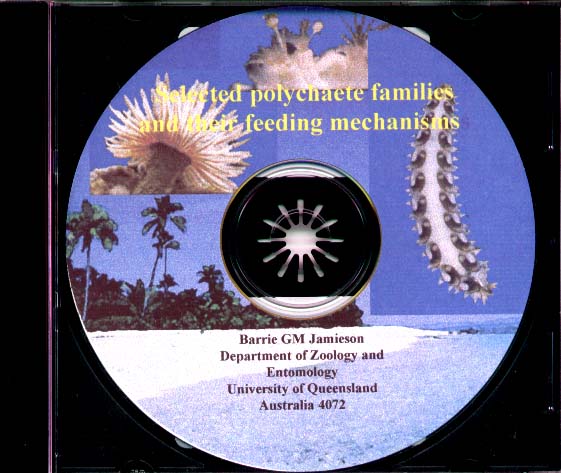
Selected polychaete families and their feeding mechanisms by Barrie G M Jamieson (Univ. of Queensland)
Click
on the is text for Further Information (including how to order the CD-ROM).
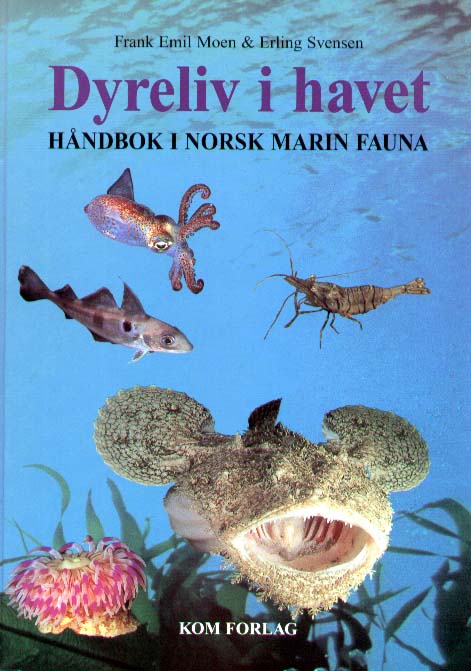
by F E Moen & E Svenson
ISBN 82-9082349-5The text is written in Norwegian, but an English version is planned. For sample photographs go the web site below:
NORWEGIAN MARINE WILDLIFE
Link to sample page of the book so you can see how the text is laid out.
BOOK REVIEWS
August 1999The UNDERWATER PHOTOGRAPHY HANDBOOK
by ANNEMARIE AND DANJA KÖHLERPublished by Stackpole Books,
part of Gazelle Books Tel: +44 (0)1524 68765
ISBN 0-8117-2966-4Price: £16.99
It is only rarely I come across a book as good as this! Assuming you have a basic knowledge of photography, the text explains the choice of equipment for high class underwater photography, maintaining the equipment, understanding the behaviour of light underwater, which film and lens to use, before exploring the art of framing your model; fish, invertebrate or aquascape to provide the best aesthetic portrait. The book contains over 160 of excellent underwater shots from close-ups of individual fish to huge shoals against a backdrop of an invertebrate covered reef. There is also a section of videography.
I know it beyond the province of the average enthusiast, and the book does not contain any biological information, but the photographs are great! It is also extremely well written.
COURSES
None
FEATURED SPECIES
Sue Daly produces a Creature Feature every month on her web site.
We had originally planned to bring this service to our members.
However, as Sue is already producing this series, I have decided to devote
my energies to producing other information.
|
|
|
Featured Web Page: Adur
Nature Notes
(the Nature Notes links in the left hand column are interesting)
PHOTOGRAPHS
The BMLSS presented the Annual Photographic Exhibition to celebrate World Oceans Day on 8 June 1999.
A similar exhibition is planned for the year 2000.
Print photographs should be sent in to Glaucus
House from March 2000. They could also be used on the BMLSS web sites.
However, if you have a large selection of your
own photographs, I would suggest that you should arrange your own exhibitions
at a Local Library or similar venue. We will help to advertise the event.
World
Oceans Day: Details of the BMLSS Exhibitions:
SEASHORE PHOTOGRAPHS
This is a simple project or request to members and readers of this Bulletin. It is to take pictures of the coast when you are next down on the shore. Even general views have value, but ideally we would like photographs of the shore showing the type of rock, topography and rock pools, dominant fauna, and information that cannot be described adequately by words on the Report Cards. The name of the particular coast should be included and the grid reference, if known. Print photographs can be included in Exhibitions and on the BMLSS Web Sites and electronic publications. Electronic images in *.JPG format can also be considered for the web site. Transparency photographs are the best choice of film but these cannot be transferred to the web pages at the present time, but these will be suitable in the future.
Aeolidia papillosa (Grey Sea Slug) with casts of the Lugworm
Photograph by Irina Roginskaya from the White Sea (Russia)
More information and discussion of sea slugs (opisthobranch molluscs)
can be found on the
Sea Slug Forum http://www.austmus.gov.au/seaslugs/
GATEWAY: LINKS TO OTHER SITES
The British Marine Life Study Society Web Site has been included as an Encyclopaedia Britannica Recommended Site and included on the BBC On-line Internet Guide.
There are
more entries on the GATEWAY
pages of the BMLSS Web Site.
| NEW
Cnidaria Web Site (World) |
|
|
[ Prev 5 | Prev | Random | Next | Next 5 ] |
The Water Web Ring |
| Friends of the
Earth SSSI Navigator
http://www.foe.co.uk/wildplaces/intros/intro2.html |
Useful site to
identify SSSIs
If the URL has changed, please go to the FOE Homepage. |
| BIOSIS
and the
Zoological Society of London |
|
| Biodiversity News (JNCC) | Regular News Bulletins |
| U.K.
ANGLERS' SHARKS,
SKATES AND RAYS |
For anybody interested in British sharks, this site is a must. |
CoralRealm |
"A coral reef marine life education web site with 1000 fish, sharks and rays in a searchable database." |

The Museum of Paleontology University of California, Berkeley |
Probably
the best site on the Internet for biological information about groups of
organisms
Click on the Cowrie to go to the site |
| Dungeness,
Kent, England
Orford Ness: Coastal Ecology of a Shingle Bank (excellent references) Rye Harbour Nature Reserve Shoreham Beach |
Shingle Beach sites |
| Worldwide Sea Anemone DataBase (External Site) | |
| The Fossil Company - Picture Gallery of Fossils | This
might help with fossil identification,
but it best on the ecology of the prehistoric |
| Geology of the Dorset Coast | Lots of detail |
| Georgian Center for Environmental Research (Black Sea) | Tip:
use the "Open in New Window facility" |
| European Register of Marine Species | Not checked yet |

Norway: Assessment Report on Fisheries and Fisheries related Species and Habitats Issues |
North Sea Fishing Stocks |
| The
Information Resource
for Aquaculture and Fisheries |
|
| INTERNATIONAL DIGITAL ELECTRONIC ACCESS LIBRARY | Weekend access for guests |
| Academic Press Dictionary of Science and Technology | |
| Biological Journal of the Linnean Society | |
| Marine Pollution (journal of) |
| NEW http://www.austmus.gov.au/Index.htm |
Excellent |
| Aquarium Net | Internet Publication for aquarists with extensive marine coverage. Very Good. |
 |
|
| Fishing News Homepage | Recommended, especially for books. |
| Contains information
on seals and
photographs. |
|
| Seaweb | Links and News Bulletins |
| ENN (Environmental) News *** | News and campaigns |
| Planet Ark (Reuters) | News |
| Sea Mammal Research Unit | Update on seal populations,
diets,
telemetry etc. |
| Profusion Search Method | One of the best Search
methods for
environment and serious information. Multiple Search Engines. It is a good tip to used the Advanced features like typing in a Phrase. |
| Capt.
Tom's Guide to New England
Sharks, USA |
Really useful stuff on shark recognition. |
| BMLSS GATEWAY 1 |
| BMLSS GATEWAY 2: Britain & Europe |
| BMLSS GATEWAY 3: America & the Rest of the World |
| UK DIVING INFORMATION |
| DIVER MAGAZINE |
| BRITISH SUB-AQUA CLUB |
SPONSORS ARE INVITED FOR THE BMLSS WEB SITE FOR 2000
WEB SITE PAGE LINKS
| BMLSS (England) HOMEPAGE |
|
|
|
|
|
| BMLSS (Facebook) |
|
|
|
|
|
|
Some of the images may not display if you have changed your directory for downloaded files.
|
Use these links if your are familiar with the scientific classifications of marine life |
Compiled on Netscape Composer, part of Netscape Communicator 4.61
